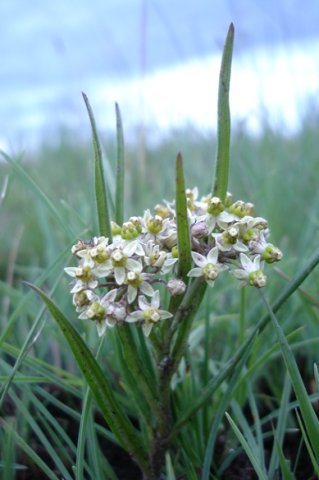Xysmalobium

Author: Ivan Lätti
Photographer: Judd Kirkel Welwitch
Xysmalobium is a genus of robust perennials in the Apocynaceae family. The plants grow from tuberous rootstocks or roots that taper to both ends. Plant parts contain milky sap. The simple, opposite leaves are often elliptic and stalkless.
The bisexual flowers grow in umbels from stem-tips or leaf axils, sessile or with peduncles. The calyces consist of five sepals, sometimes with scales in the sinuses, the dips between the lobes. The corollas are five-lobed, erect or reflexed, the lobes separate to near the base. The corona in each flower centre has five fleshy lobes arising from the staminal column that emerges from the corolla base. These lobes are sometimes forked at the tip or three-tipped.
The five stamens forming a column end in anthers that have two locules each. The pollen is kept in waxy masses, the pendulous pollinia. The ovaries are superior; the styles close to the stamens.
The fruits are follicles, smooth or with fleshy projections, usually solitary from one aborting or in pairs. The oblong seeds are convex on one side, depressed on the other, with tubercled rim and hair tuft at the tip.
There are about 40 Xysmalobium species all occurring in Africa, 21 of them in southern African grassland. The name Xysmalobium is derived from the Greek words xusma meaning lint, bandage or plaster and lobion a diminutive of lobos meaning pod or lobe, referring to the fruit follicles that may be “lint-covered” or hairy, or possibly to the corona lobes.
The plant in picture is Xysmalobium involucratum (Leistner, (Ed.), 2000; Manning, 2009; Pooley, 1998).

